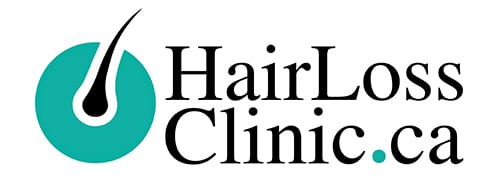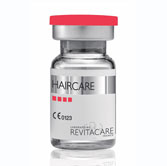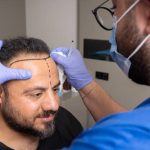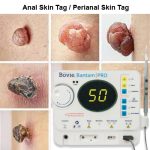
FOLLICULAR UNIT ANALYSIS for clients contemplating a hair transplant
- Are you thinking about doing a hair transplant? Before you do, you should read this first.
- Hair transplant surgery relies on donor hair. Insufficient donor hair leads to inadequate density and poor results.
- Our Follicular Unit Analysis (FUA) Service will help you determine if you have adequate donor follicular units and hairs prior to doing your hair transplant.
- FUA is a non-invasive service specifically developed to aid your hair transplant surgeon in counting available follicular units and hairs, calculating densities and diameters, recipient and donor scalp surface areas with a correction to an applicable scalp curvature, numbers of grafts, available and in need to achieve desired treatment results.

This service can be done prior to your initial consultation with your hair transplant surgeon and prior to an actual hair transplant procedure. This is particularly beneficial if you plan to do your hair transplant in another country for example, Turkey, where you have not seen your hair transplant surgeon prior to your surgery. If your surgeon is local, this report will aid him to determine if you are suitable for a hair transplant.
Follicular unit density, hair density, and calculated density (the mean number of hairs per FU) are critical pre-operative hair restoration measurements because they allow the hair transplant surgeon to estimate the number of grafts, the total number of hairs, and the average number of hairs per graft that can be transplanted in a given procedure and ultimately determine the suitability of a patient for hair transplant surgery.
Given the substantial utility of density measurements in predicting the outcome of a hair restoration, FUA reduces the time a hair transplant surgeon must spend determining these values without compromising the integrity of the data would be highly advantageous.
Each standard “Follicular unit analysis” diagnostic session is composed of “Area sizing”, “Measurements”, “Summary/Calculator” sections, followed by final “Conclusion/Print results” step.
AREA SIZING
First section “Area sizing” is devoted for taking non-magnified photos of patient’s scalp both for recipient and donor areas. These areal pictures are taken by a non-magnifying digital camera and stored both for general case reviews and their size measurements by recording a name for each area and assigning it a number, marked up on a template, in the applicable table in “Input the area number” and “Enter the comment” fields.
MEASUREMENTS
“Measurements” is devoted for taking magnified images within each established zone of recipient and donor areas of a patient in order to count available hairs and follicular units, thus, determining their densities, as well as measure hair diameters, establish their distribution per follicular units and distances between them, thus, determining their mean values.
CALCULATOR / SUMMARY
“Calculator/Summary” is devoted to gather all measurements results and calculate for numbers of grafts, available and in need to achieve desired treatment results. Data for hair and follicular unit densities, including separating into single, double, triple and quadruple units, is being presented in counts per one sq.cm and recalculated for a total count per established each recipient and donor area size. When each of these main areas is composed of more than one section, all are being summarized to present a total count for a total recipient and donor area size.
CONCLUSION / PRINT RESULTS
When the session is finished, a full diagnostic session report will be generated and printed for you to take to your hair transplant surgeon.
CLIENT 1
Figure 2: Male patient’s case with a progressing pattern baldness sample session on preparation for a procedure review:
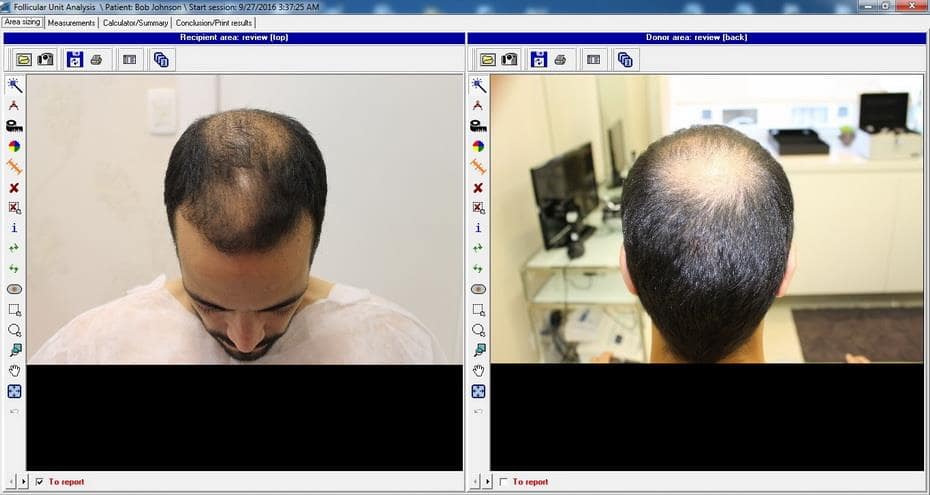
In first module’s section for “Area Sizing” global photographs of a patient are being taken, starting with general overview pictures to be kept on a patient’s file, which are not limited in amount and all have to be assigned to area “0” with an appropriate description, when saving, in order not to be included for areal calculations.

Figure 3: A template being applied to scalp, separating it into subareas with different growing hair densities.
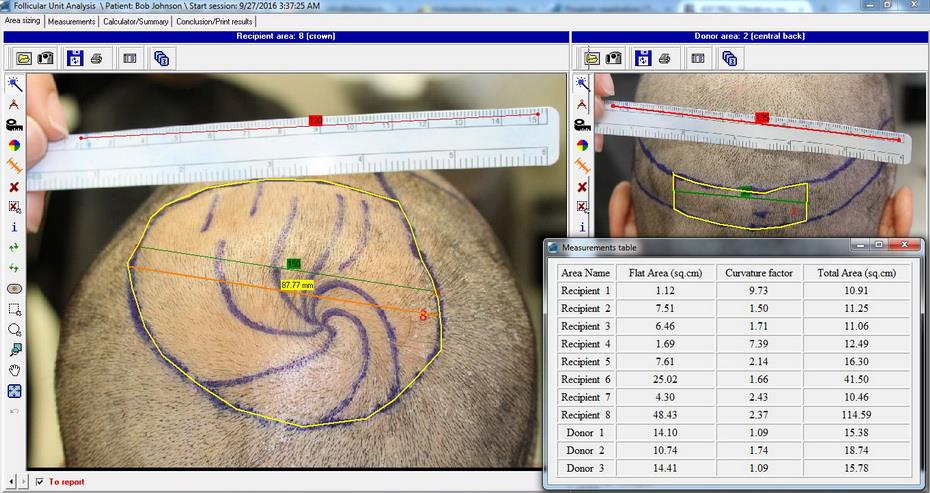
Figure 4: After obtaining measurements of all subareas of recipient area in left window and donor area in right window, results can be previewed in summary table.

Figure 5: In second module’s section for “Measurements” microscopic photographs of each subarea are being taken for hair density counts with their diameters measured, as well as follicular unit counts with distances between neighboring units measured. Each subarea is being recorded under its assigned number and results can be previewed in summary table.
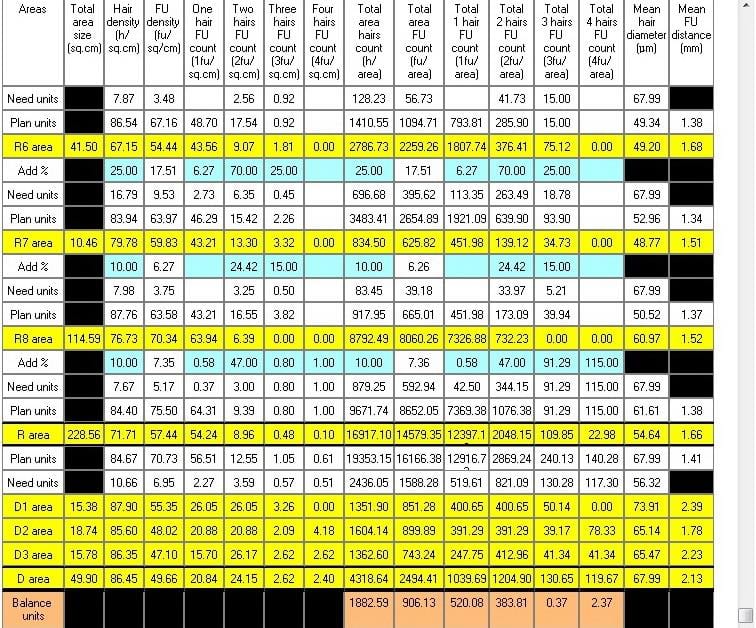
Figure 6: All obtained in first two sections results are being imported into third module’s section “Calculator/Summary”, where this data can be analyzed and adjusted according to planned procedure needs. After analysis is finished, a complete diagnostic session report can be formed in this module’s fourth section “Conclusion/Print results”.
This example presented shows FUT technique for Donor Area. Same approach can be taken, if FUE technique is used, large Donor areas limited to sectioned out two or four subareas, are being measured identically and then the total numbers divided, say, by three, if every third “plug” is taken out. etc. This way a total available hairs and units count is being established. And for patients in advanced balding stages for combined FUT/FUE therapy, a template is drawn establishing all subzones for Donor Area, then with first step FUT strip shall be reviewed, and with second – 4 or 8 FUE areas to be covered.
CLIENT 2
Next is a female patient’s case at a beginning stages of pattern baldness sample session for an initial consultation for a procedure review:
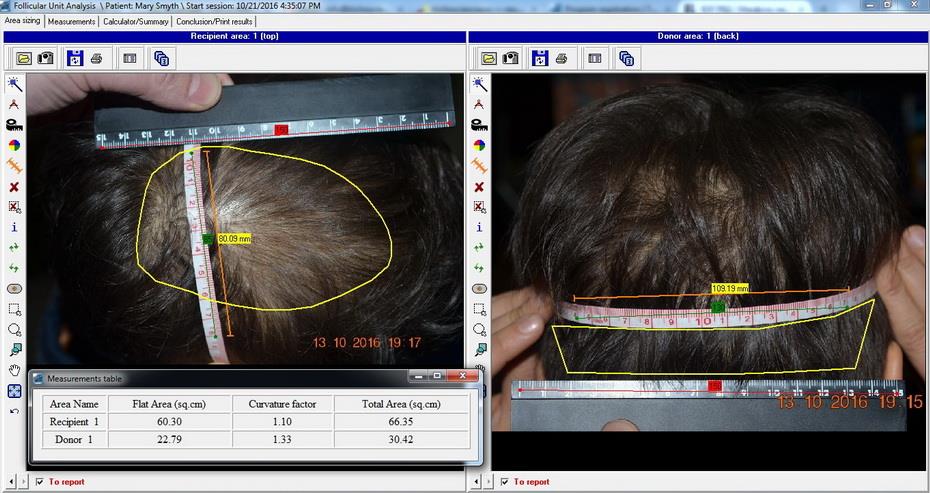
Figure 7: In first module’s section for “Area Sizing” global photographs of a patient’s Recipient and Donor areas are being taken with a hard mm range visible within for an actual camera scaling and soft taylor meter ran across for scalp curvature factor, when sizing an area calculations. After obtaining measurements of all subareas of recipient area in left window and donor area in right window, results can be previewed in summary table.
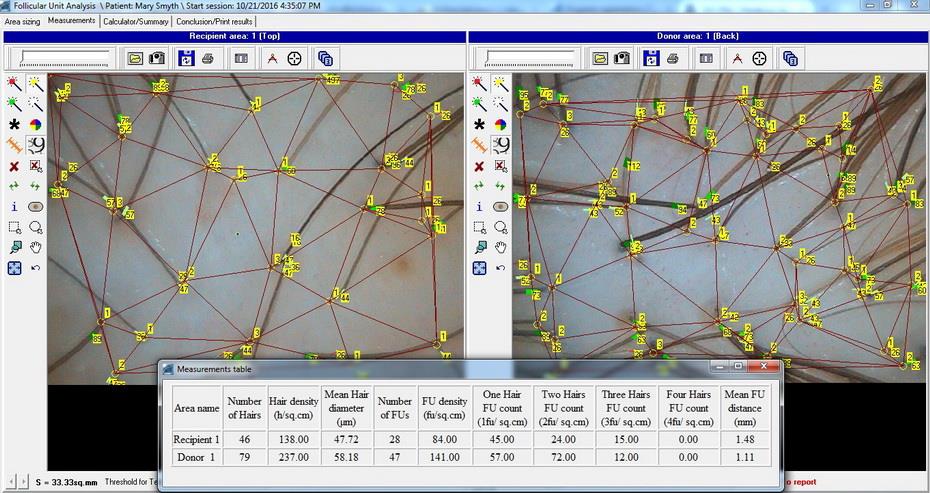
Figure 8: In second module’s section for “Measurements” microscopic photographs of each subarea are being taken for hair density counts with their diameters measured, as well as follicular unit counts with distances between neighboring units measured. Each subarea is being recorded under its assigned number and results can be previewed in summary table.
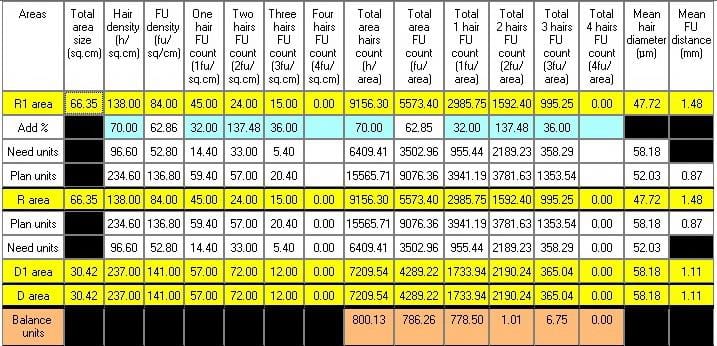
Figure 9: All obtained in first two sections results are being imported into third module’s section “Calculator/Summary”, where this data can be analyzed and adjusted according to planned procedure needs by same approach, as described in first case above. After analysis is finished, a complete diagnostic session report can be formed in module’s fourth section “Conclusion/Print results”.
FUA PRICING
$297
If it is determined that you are not a good candidate for a hair transplant, you can receive $75 CREDIT off the FUA fee towards any of our other services and treatments such as SMP Scalp Micropigmentation, AAPE, Pharma Hermetic.
To book your Follicular Unit Analysis, please CLICK HERE
FREE ONLINE HAIR LOSS ASSESSMENT FORM
Are you experiencing any hair loss or scalp issues? Get a Certified Trichologist to assess and help treat your condition in Toronto and Greater Toronto Area. Please complete our online Trichology Assessment Form to get started TODAY.
ADDRESS
Toronto, 225 Wellesley St East #5
Richmond Hill,9140 Leslie St #301
PHONE
(647) 492-9093
hairlossclinic.ca@gmail.com
WORKING HOURS
Mon-Sat 9:00-18:00
Sunday CLOSED
Comments are closed.
